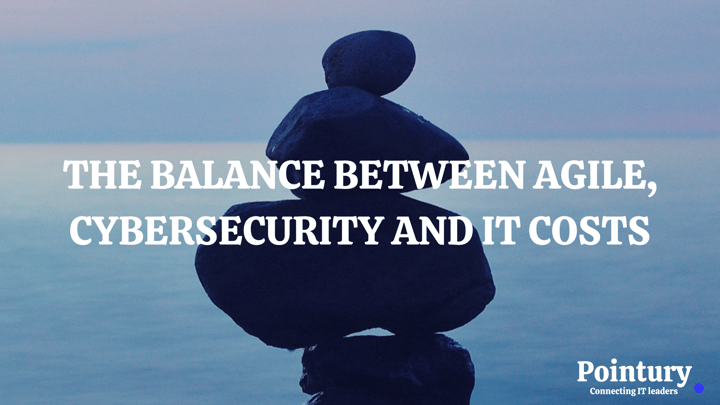THE BALANCE BETWEEN AGILE, CYBERSECURITY AND IT COSTS

The Balance between Agile, Cybersecurity and IT Costs
Agile development methodologies have gained significant traction in the world of software development due to their ability to enhance flexibility, collaboration, and responsiveness to customer needs. However, adopting agile practices doesn't mean compromising on crucial aspects like cybersecurity and IT costs. Achieving a harmonious balance between agile development, cybersecurity, and cost efficiency is essential for building resilient and cost-effective software solutions. This article explores strategies to achieve this equilibrium successfully.
Understanding Agile Development
Agile development is an iterative and flexible approach to software development, focusing on delivering small, incremental improvements through rapid cycles of development, testing, and feedback. The key principles of agile methodologies include customer collaboration, responding to change, and delivering a minimum viable product (MVP) to meet evolving requirements.
Incorporating Cybersecurity into Agile Development
Integrating cybersecurity measures into an agile development process is critical to building secure software. Here's how organizations can ensure cybersecurity while adhering to agile principles:
a. Security as a User Story:
Treat cybersecurity as an essential user story during sprint planning. Assign specific security tasks, such as threat modeling, vulnerability assessments, or security testing, as backlog items to be addressed within each sprint.
b. Automated Security Testing:
Utilize automated security testing tools that can seamlessly fit into the continuous integration/continuous deployment (CI/CD) pipeline. This ensures that security checks are performed continuously, identifying vulnerabilities early in the development process.
c. Collaborative Security Reviews:
Encourage collaboration between security experts and development teams. Conduct regular security reviews and discussions to identify potential vulnerabilities and suggest necessary improvements without slowing down the development pace.
Managing IT Costs in Agile Development
Cost management is crucial to ensure the sustainability and profitability of software development projects. Implementing agile practices with cost-effectiveness in mind involves the following strategies:
a. Prioritized Backlog:
Work closely with stakeholders to prioritize features and requirements based on business value and return on investment. Focus on delivering high-priority features first to ensure maximum value within the available budget.
b. Efficient Resource Allocation:
Optimize resource allocation based on the project's needs. Utilize cross-functional teams effectively, matching skills with project requirements to minimize resource waste and optimize costs.
c. Incremental Delivery and Feedback:
Employ an iterative delivery approach to gather continuous feedback from users. This allows for incremental improvements, reducing the risk of costly rework and ensuring the final product aligns with customer expectations.
Conclusion
Balancing agile development with cybersecurity and IT costs is a strategic imperative for modern software development. Embracing a security-first approach within the agile framework and optimizing cost management through efficient prioritization and resource allocation are essential steps toward achieving this balance. By integrating cybersecurity practices into the development process and prioritizing tasks based on business value, organizations can create secure, cost-effective software solutions that meet the evolving needs of their customers. Ultimately, this balance facilitates successful project delivery, enhanced customer satisfaction, and long-term business sustainability.


